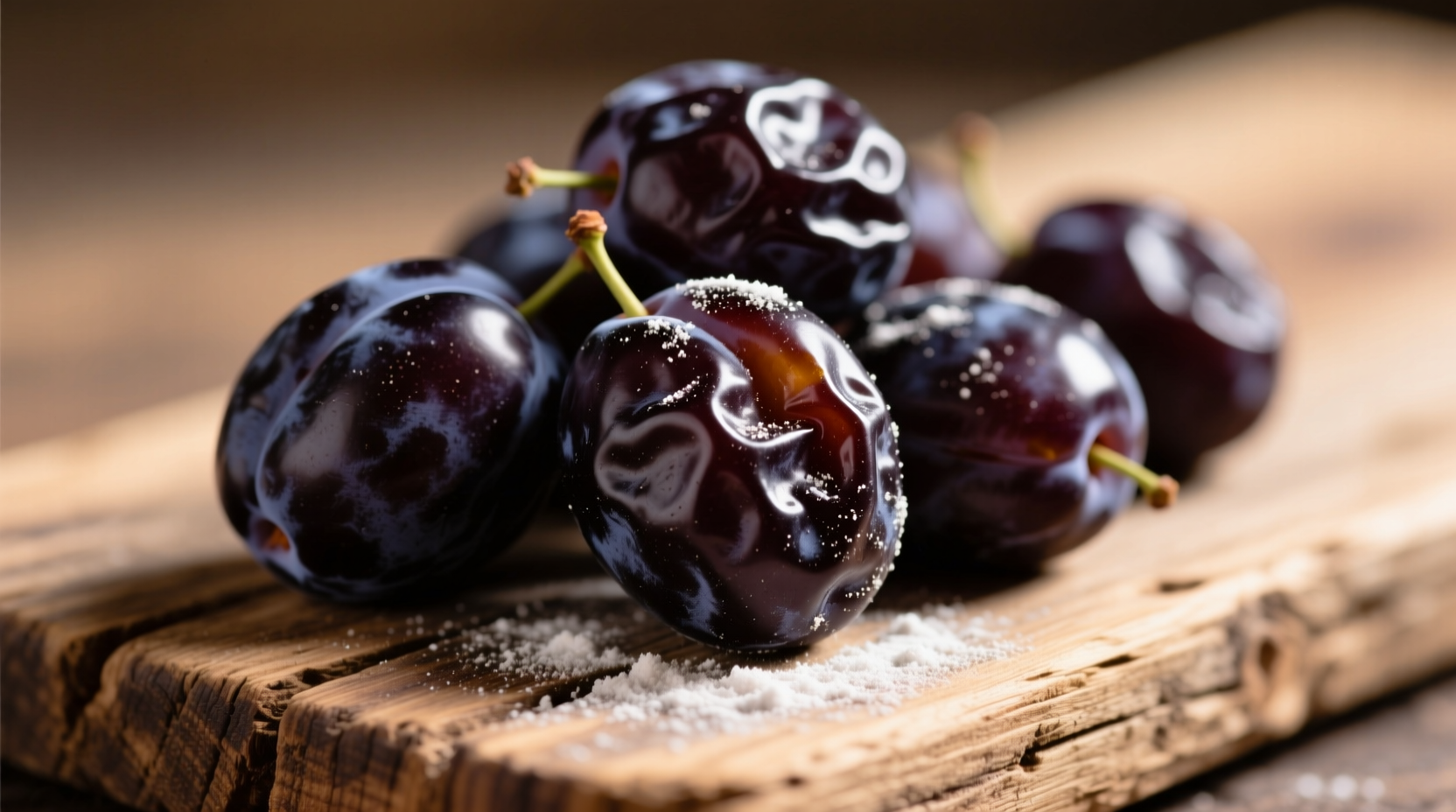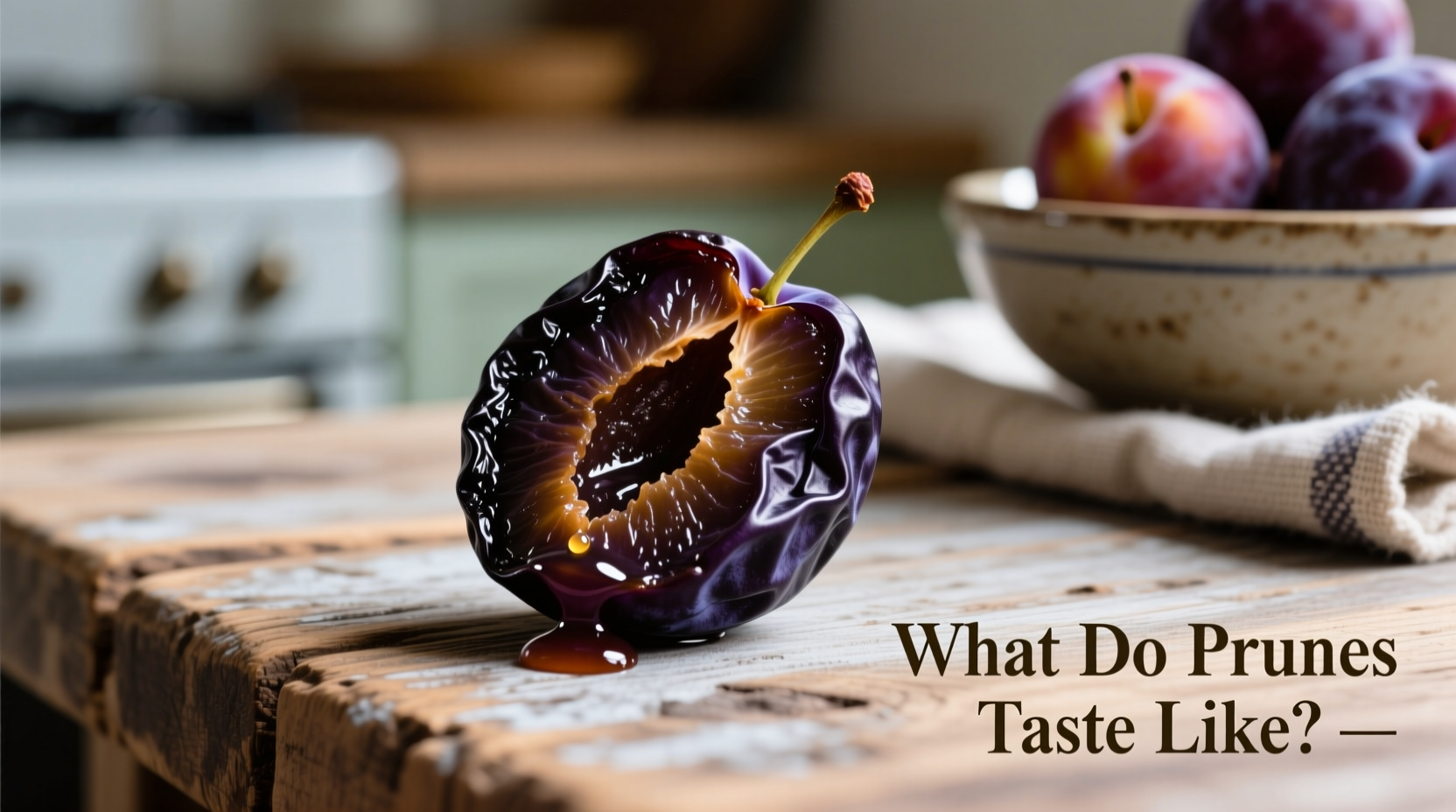Ever wondered what gives prunes their distinctive flavor? You're not alone. Many home cooks and curious eaters want to understand exactly what do prunes taste like before adding them to recipes or snacking. Unlike their fresh plum counterparts, prunes deliver a unique sensory experience that surprises many first-time tasters.
The Core Flavor Profile of Prunes
Prunes offer a sophisticated flavor balance that makes them stand out among dried fruits. Their primary taste characteristics include:
- Sweetness - Natural sugars concentrate during drying, creating a deep, honey-like sweetness
- Caramel notes - The drying process develops rich, toffee-like undertones
- Subtle tartness - A gentle acidic balance prevents them from being cloying
- Fruity depth - Remnants of fresh plum flavor with earthy, wine-like complexity
- Earthy undertones - A distinctive base note that adds sophistication
When you bite into a prune, you'll first notice the concentrated sweetness, followed by those complex caramel notes, with a finish that reveals subtle tartness balancing the overall profile. This layered flavor development makes prunes particularly interesting to food scientists studying what do dried prunes taste like compared to other dried fruits.

Texture: More Than Just Chewy
The texture of prunes significantly contributes to their eating experience. High-quality prunes should be:
- Moist but not sticky - Properly dried prunes retain about 25-30% moisture
- Chewy with slight resistance - They yield to pressure without being tough
- Smooth surface - No hard or crystallized sugar coating
- Plump appearance - Well-hydrated dried fruit shouldn't look shriveled
Texture directly affects perceived flavor intensity. The chewiness allows flavors to develop gradually as you eat, creating a longer flavor experience than many other dried fruits. This characteristic makes understanding how do prunes taste different from other dried fruits important for culinary applications.
Prunes vs. Plums: The Flavor Transformation
Many people don't realize that prunes are simply dried plums—specifically from European plum varieties like 'French Prune' or 'Sugar'. The drying process fundamentally transforms their flavor profile:
| Characteristic | Fresh Plums | Prunes (Dried) |
|---|---|---|
| Sweetness Level | Moderate (10-13°Brix) | Concentrated (60-70°Brix) |
| Primary Flavor Notes | Juicy, floral, sometimes tart | Caramel, honey, wine-like complexity |
| Acidity | More pronounced | Mellowed, balanced by sweetness |
| Texture | Firm, juicy, sometimes crunchy | Chewy, dense, moist |
This transformation occurs through enzymatic and Maillard reactions during the drying process, which develop those signature prune flavors that many wonder about when asking what do prunes taste like compared to fresh plums.
How Drying Method Affects Flavor
The way prunes are dried significantly impacts their final taste. Traditional sun-drying versus modern dehydration creates distinct flavor profiles:
| Drying Method | Flavor Characteristics | Best For |
|---|---|---|
| Sun-dried (traditional) | Deeper caramel notes, more complex earthiness | Stews, braises, standalone snacking |
| Dehydrator-dried | Cleaner plum flavor, brighter sweetness | Baking, smoothies, energy bars |
| Oven-dried (home method) | Intermediate profile, can develop slight bitterness if over-dried | Immediate use in recipes |
According to agricultural research from the University of California Cooperative Extension, the slow dehydration process in traditional sun-drying allows for more complex flavor development through enzymatic browning reactions that don't occur as fully in faster mechanical drying methods (UCANR Prune Research).
Common Flavor Misconceptions
Several myths persist about prune flavor that deserve clarification:
- "Prunes taste medicinal" - This stems from older varieties and improper storage. Modern prunes have a clean, fruity flavor.
- "All prunes taste the same" - Different plum varieties create distinct flavor profiles, from the honeyed 'Petite d'Agen' to the wine-like 'Stanley'.
- "Prunes are too sweet" - The natural tartness balances the sweetness, creating a complex profile rather than one-dimensional sweetness.
- "Prunes taste like dates" - While both are sweet dried fruits, prunes have brighter acidity and less molasses-like flavor than dates.
Culinary Applications Based on Flavor Profile
Understanding what do prunes taste like helps you use them effectively in cooking:
- Savory dishes - Their subtle tartness cuts through rich meats; try in Moroccan tagines or with pork
- Baking - Replace up to 1/3 of sugar with pureed prunes while maintaining moisture
- Breakfast - Chop into oatmeal for natural sweetness without added sugar
- Cheese pairings - Complement blue cheeses and aged cheddars with their caramel notes
- Smoothies - Add natural sweetness and fiber without banana
Professional chefs note that the malic acid in prunes creates a flavor bridge between sweet and savory applications, making them uniquely versatile compared to other dried fruits when considering how do prunes taste in different culinary contexts.
Factors That Influence Prune Flavor
Several elements affect how prunes taste:
- Variety - French Agen prunes offer deeper caramel notes while Imperial varieties have brighter fruitiness
- Ripeness at harvest - Fully ripe plums create sweeter, more complex prunes
- Drying time - Longer drying develops more complex flavors but risks bitterness
- Storage conditions - Exposure to light and air causes flavor degradation over time
- Added ingredients - Some commercial prunes include oil or sugar that alters natural flavor
The California Dried Plum Board's sensory analysis shows that prunes reach peak flavor complexity at 18-24 months post-drying, after which flavors gradually mellow (Prune.com Sensory Research).
When Prune Flavor Works Best (and When It Doesn't)
Understanding the context boundaries for prune flavor helps maximize their culinary potential:
- Ideal applications: Cheese boards, braised meats, whole grain salads, natural sweeteners in baking, energy snacks
- Limited effectiveness: As direct substitutes for fresh fruit in salads, in delicate desserts where subtle flavors dominate
- Flavor conflicts: With very light, floral ingredients like white chocolate or delicate berries
- Enhancement techniques: Light toasting brings out caramel notes, soaking in citrus juice brightens flavor
Food scientists at the USDA have documented that prune flavor pairs particularly well with warm spices like cinnamon and cardamom, as these enhance the natural caramel notes without overwhelming the fruit's delicate balance (USDA Food Research).
Refreshing Your Palate: Proper Tasting Technique
To truly appreciate what prunes taste like, follow this professional tasting method:
- Cleanse your palate with water or plain crackers
- Examine the prune visually for plumpness and color
- Smell before tasting to detect aromatic notes
- Take a small bite without chewing to assess initial moisture
- Chew slowly, noting flavor progression from sweet to tart
- Pay attention to aftertaste and mouthfeel
This method reveals why many professional tasters describe high-quality prunes as having "a flavor journey" rather than a single-note sweetness when exploring what do prunes taste like in detail.
Frequently Asked Questions
Are prunes naturally sweet or do they add sugar?
Prunes are naturally sweet without added sugar. The drying process concentrates the plum's natural sugars, creating that characteristic sweetness. No sweeteners are added in traditional prune production.
Why do some prunes taste bitter?
Bitterness usually indicates over-drying or improper storage. Exposure to excessive heat during drying can cause tannins to become more pronounced. Properly dried prunes should have balanced sweetness without bitterness.
How does the taste of prunes differ from dates?
Prunes have brighter acidity and more complex caramel notes, while dates offer deeper molasses-like sweetness with less tartness. Prunes also have a lighter, fruitier profile compared to dates' rich, toffee-like flavor.
Can you taste the difference between prune varieties?
Yes, different prune varieties have distinct flavor profiles. French Agen prunes offer deep caramel notes, while Imperial varieties have brighter fruitiness. The 'Petite d'Agen' is particularly prized for its honeyed complexity.
Do prunes taste better cooked or raw?
Both have merits. Raw prunes showcase their natural flavor complexity, while cooking enhances their sweetness and integrates them into dishes. In savory applications like tagines, cooking allows prune flavors to meld beautifully with other ingredients.











 浙公网安备
33010002000092号
浙公网安备
33010002000092号 浙B2-20120091-4
浙B2-20120091-4